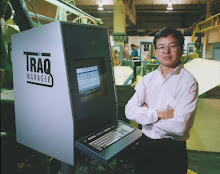A customer asked a contractor friend of mine how much it would cost to do this project.
My friend gave him a proposal: $4500
The customer responded: That’s seems really high.
My friend asked: What do you think is a reasonable price for this job?
The customer answered: $2500 maximum
My friend responded: Ok, then I invite you to do it yourself.
The customer answered: I don't know how to.
My friend responded: Alright, then how about for $2500 I'll teach you how to. So besides saving you $2000, you'll learn valuable skills that will benefit you in the future.
The customer answered: Sounds good! Let’s do it!
My friend responded: Great! To get started, you are going to need some tools. You will need a chop saw, table saw, cordless drill, bit set, router, skill saw, jig saw, tool belt, hammer, etc..
The customer answered: But I don't have any of those tools and I can't justify buying all of these for one job.
My friend responded: Ok. Well then for an additional $300 I can rent my tools to you to use for this project.
The customer answered: Okay. That’s fair.
My friend responded: Great! We will start the project on Monday.
The customer answered: I work Monday through Friday. I’m only available on the weekends.
My friend responded: If you want to learn from me then you will need to work when I work. This project will take 3 days so you will need to take 3 days off work.
The customer answered: That means I’m going to have to sacrifice my pay for 3 days or use my vacation time!
My friend responded: That’s true. Remember, when you do a job yourself you need to account for unproductive factors.
The customer answered: What do you mean by that?
My friend responded: Doing a job completely from start to finish includes time spent to plan the project, pick up materials, travel time, gas, set up time, clean up, and waste disposal amongst other things. That’s all in addition to the actual project itself. And speaking of materials, that’s where we will start on Monday so I need you to meet me at the lumberyard at 6:00am.
The customer answered: At 6am?!! My work day doesn’t usually start until 8am!
My friend responded: Well then you’re in luck! My plan is to start on the deck build by 8am. But to do so we have to start at 6am to get materials picked up, loaded and delivered to your job site.
The customer answered: You know, I’m realizing that a lot more goes in to a job than what a customer sees in the finished project. Your proposal of $4500 is very reasonable. I would like you to handle the project.
CONCLUSION:
When you pay for a job, especially a custom job, (whether it’s a physical project or digital project) you pay not only for the material and the work to be completed. You also pay for:
If you request a proposal for custom work to be done, please don’t disrespect a service provider by trying to get them to lower their prices.
If their proposal exceeds your budget, there’s nothing wrong with getting other proposals.
Just remember.. you get what you pay for.
Sharing this to support all my friends, family and clients who are Entrepreneurs, Business Owners and Tradesman.






